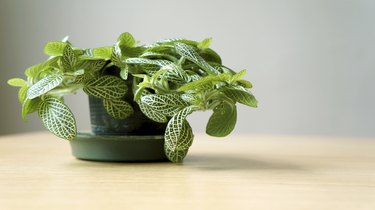
Cyanide is a naturally occurring substance found in a number of compounds. A cyanide plant source contains cyanogenic glycosides, which are responsible for the toxicity found in certain plants and seeds. While humans and animals may be exposed to cyanide gas through smoke, vehicle exhaust and industrial processes, you're generally more likely to be exposed by eating plants that contain cyanogenic glycosides.
Cyanide Plant Sources
Video of the Day
Plants that contain cyanide compounds include young bamboo shoots (Bambusa spp.), cassava roots (Manihot esculenta), giant taro leaves (Alocasia macrorrhizos) and lima or butter beans (Phaseolus lunatus L.). Pickling in vinegar, boiling for 30-plus minutes or soaking in water for 24 to 48 hours and then draining, adding fresh water and boiling for at least five minutes removes the toxic cyanide compounds, making these vegetables safe for you to enjoy with dinner.
Video of the Day
Sufficient protein in your diet and only occasionally eating these plants allows your body to detoxify the small amounts of cyanide that may be left in the cooked or pickled vegetables. Your liver and muscle tissues will release the toxins so they safely pass out of your body when you urinate.
Toxic Seeds and Pits
The seeds of some fruits contain cyanogenic glycosides, including apple seeds and the kernels inside the pits of many Prunus species. While the flesh of apricots, cherries, nectarines, peaches and plums is safe to eat, the pits should be discarded in the trash and out of the reach of children and pets.
In addition, bitter almond (Prunus amygdalus var. amara) is highly toxic and should not be ingested. The nuts harvested from its close relative, sweet almond (Prunus amygdalus var. dulcis), do not contain cyanide compounds and are perfectly safe to eat whether raw or toasted.
Other Sources of Cyanide
Smoking cigarettes and breathing the smoke of burning plastics exposes your lungs and body to cyanide. This is the greatest exposure for those who don't work in cyanide-related manufacturing industries.
Cyanide is used in industrial processes when making a variety of products, including paper, cloth and plastics. Cyanide is an essential ingredient in the chemicals and salts used to develop photographs as well as in electroplating metals and processing gold ore. It is also the toxic element in gases used for pest control.
Symptoms of Cyanide Exposure
Exposure to cyanide usually occurs from breathing cyanide gas, absorbing it through the skin or ingesting foods or seeds that contain the toxin. Even a slight exposure may result in a headache or dizziness, upset stomach, vomiting, rapid breathing, rapid heartbeat and/or weakness. A larger exposure can cause seizures, fainting, respiratory distress or failure, low blood pressure and/or a slow heartbeat, which may lead to death. Survivors of cyanide poisoning may suffer from long-term effects, including heart, nerve and/or brain damage.
If you've been exposed to cyanide, call 911. Quickly remove your clothing and put it in a plastic bag and then place that bag inside a second bag. Shower immediately using copious amounts of soap and water. If you're assisting someone else, put on gloves and help the person to remove clothing and bathe. Inform emergency personnel where the bag of clothing is located so it can be taken with you to the hospital and analyzed for traces of cyanide.
Treatment for cyanide poisoning requires antidotes for the poison and hospitalization. Don't wait for symptoms to develop; seek help and medical assistance as quickly as possible.